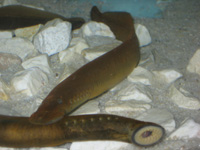Oldest European fort in the inland US discovered in Appalachians
ANN ARBOR — The remains of the earliest European fort in the interior of what is now the United States have been discovered by a team of archaeologists, providing new insight into the start of the U.S. colonial era and the all-too-human reasons spoiling Spanish dreams of gold and glory.
Spanish Captain Juan Pardo and his men built Fort San Juan in the foothills of the Appalachian Mountains in 1567, nearly 20 years before Sir Walter Raleigh’s “lost colony” at Roanoke and 40 years before the Jamestown settlement established England’s presence in the region. (more…)

